The Future is now

Monday closed
Tuesday to Sunday 11 am – 7 pm
Tuesday, 1 July 7 pm > 9 pm
Wednesday, 9 July 7 pm > 9 pm
Wednesday, 16 July 7 pm > 9 pm
book online
last entrance 8 pm
– for young people aged between 18 and 25 (not yet turned 25);
– for groups of 15 people or more;
– La Galleria Nazionale, Museo Ebraico di Roma ticket holders;
– upon presentation of ID card or badge: Accademia Costume & Moda, Accademia Fotografica, Biblioteche di Roma, Centro Sperimentale di Cinematografia, Enel (for badge holder and accompanying person), FAI Fondo Ambiente Italiano, Feltrinelli, Gruppo FS, IN/ARCH Istituto Nazionale di Architettura, Sapienza Università di Roma, LAZIOcrea, Palazzo delle Esposizioni, Amici di Palazzo Strozzi, Accademia Nazionale di Santa Cecilia, Scuola Internazionale di Comics, Teatro Olimpico, Teatro dell’Opera di Roma, Teatro di Roma, Università degli Studi di Roma Tor Vergata, Youthcard;
valid for one year from the date of purchase
– minors under 18 years of age;
– myMAXXI cardholders;
– on your birthday presenting an identity document;
– upon presentation of EU Disability Card holders and or accompanying letter from hosting association/institution for: people with disabilities and accompanying person, people on the autistic spectrum and accompanying person, deaf people, people with cognitive disabilities and complex communication needs and their caregivers, people with serious illnesses and their caregivers, guests of first aid and anti-violence centres and accompanying operators, residents of therapeutic communities and accompanying operators;
– MiC employees;
– journalists who can prove their business activity;
– European Union tour guides and tour guides, licensed (ref. Circular n.20/2016 DG-Museums);
– 1 teacher for every 10 students;
– AMACI members;
– CIMAM International Committee for Museums and Collections of Modern Art members;
– ICOM members;
– from Tuesday to Friday (excluding holidays) European Union students and university researchers in art history and architecture, public fine arts academies (AFAM registered) students and Temple University Rome Campus students;
– IED Istituto Europeo di Design professors, NABA Nuova Accademia di Belle Arti professors, RUFA Rome University of Fine Arts professors;
– upon presentation of ID card or badge: Collezione Peggy Guggenheim a Venezia, Castello di Rivoli Museo d’Arte Contemporanea, Sotheby’s Preferred, MEP – Maison Européenne de la Photographie;
MAXXI’s Collection of Art and Architecture represents the founding element of the museum and defines its identity. Since October 2015, it has been on display with different arrangements of works.
Monday closed
Tuesday to Sunday 11 am – 7 pm
Tuesday, 1 July 7 pm > 9 pm
Wednesday, 9 July 7 pm > 9 pm
Wednesday, 16 July 7 pm > 9 pm
book online
last entrance 8 pm

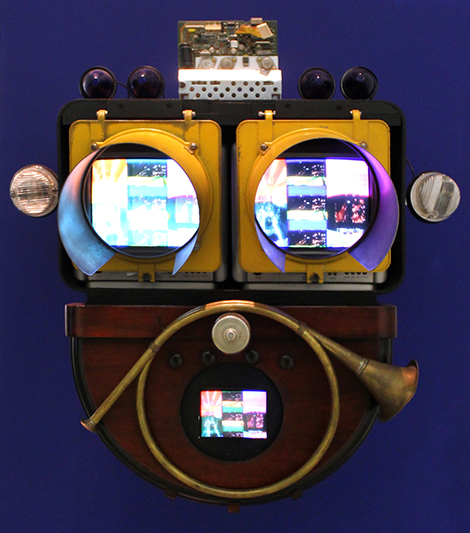
PAIK NAMJUNE, Highway Hacker, 1994 Televisore d’epoca e armadietto, 3TV, LDP
The first section of the exhibition presents works by Korean pioneers of new media art, such as Duck Jun Kwak, Hyun Ki Park and Nam June Paik.
Arranged chronologically, these works illustrate the development of new media art in Korea. Video art was initially introduced to Korea in the mid 1960s through the pioneering works of Nam June Paik, such as TV Magnet, Zen for TV, and Highway Hacker.
Notably, although Paik immediately gained renown overseas, his works have only been sporadically presented in Korea at the time.
This section includes works by Paik and other Korean artists working abroad, like Kwak and early works by artists based in Korea who were seeking to develop their unique artistic vision, such as Hyun Ki Park’s.
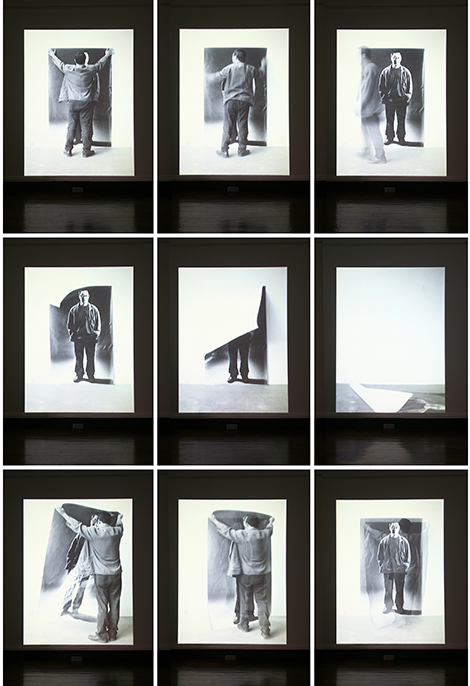
In the 1980s, video technology and video art began to appear on a grander scale in Korea, starting with Nam June Paik’s three satellite projects in 1984, 1986, and 1988 and the installation of Dadaikseon (The More The Better) at the National Museum of Modern and Contemporary Art, Korea in 1988. Other MMCA events that prominently featured video art include the exhibition to celebrate the 1993 Daejeon Expo and the Whitney Biennale.
All of these events inspired Korean artists to actively embrace new media as an artistic discipline, culminating in the 1992 New Visions New Voices exhibition, where in a group of artists born in the 1960s unveiled new works that represented their intensive experiments in combining art and technology.
Those artists, including Kong Sunghoon, Yook Taejin, Kim Haemin were part of the “video generation,” who developed a new sensitivity to video, growing in conjunction with a deluge of TV programs and Hollywood movies.
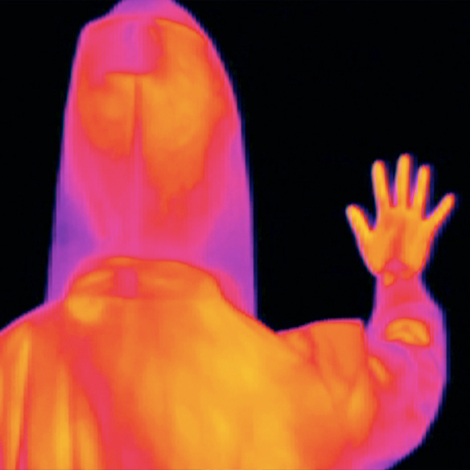
  | With the advent of the new millennium, the digital revolution greatly expanded social access to the internet, and also transformed the modes of contemporary art. By enabling the limitless reproduction of objects, the digital revolution promoted the emergence of new concepts related to the production and reproduction of artworks.The vastly expanded connectivity and reach through cyberspace accelerated globalization going beyond existing local boundaries. Artists born in the 1970s, who launched their career in the late 1990s, created works that reflect the new status of art in a society where the internet, video, and other new media have become deeply integrated into our daily lives. Video art, which once existed only in association with performance or installation art, has now evolved into an independent art form reflecting artists’ unique perspectives on society, and as such, has become an essential pillar of visual culture. These artistic achievements can be seen in video works by Kim Sejin, Im Heungsoon, Ham Yangah and other artists. New media is not a foreign expressive media for the generation growing in image culture but more familiar and freer one than a pencil or a brush. It expresses various situations in a society they encounter. LIM MINOUK, The Weights of Hands, 2006. Video monocanale ZIN KIJONG, CNN, 2007. |
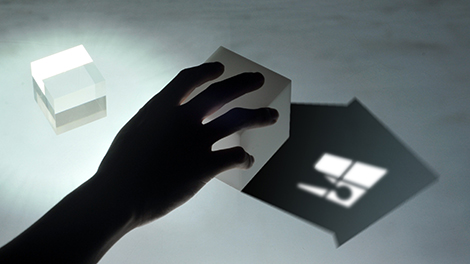
 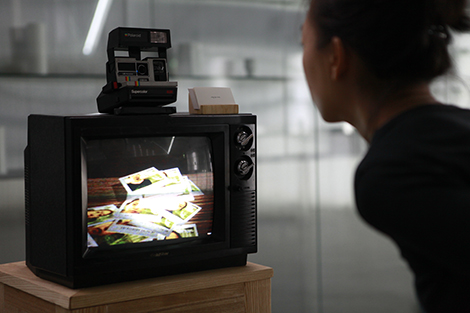 | Korean society has experienced new cultural and social changes due to supplies of digital devices and spread of social network services. Various tries such as getting over neoliberalism through sharing, cooperation and a local community are happening.When it comes to art creation, cases to try artistic experiments integrated by many genres across art, design and engineering have gradually increased as not an individual but a collective. You will meet creators to try new artistic experiments with News from nowhere by two artists, Moon Kyung won + Jeon Joonho, who have an exclusive art world respectively through cooperation with experts in various fields such as an architect, a dancer and a designer, BANG & LEE trying to historical and artistic consideration on both danger and possibility of media and Everyware’s activities approaching a warm technology by combining analogue sensitivity with digital technology. Sounds and performances beyond art have been comprehensively accepted and delivered through the cooperation process. Experiments to understand and accept possibilities, meaning and limits of new media through a wide cultural context have been conducted in art world rather than focusing on new media art as a new expressive media.
MOON JOON, Augmented Shadow, 2010 EVERYWARE, Memoirs, 2010 |
19 December 2014 – 15 March 2015
Sala Gian Ferrari and Sala Carlo Scarpa
Over forty video works and media installations tell the story of the Korean New Media Art scene, from the early works by Nam June Paik, to the experiments carried out in the 1980s, by way of the digital revolution and the cultural changes triggered by the Internet and the social networks.
THE FUTURE IS NOW! presents MMCA’s New Media Art collection with the aim of reflecting on the “futures” by analyzing New Media Art ever since it was founded in 1987 to the present day.
The title of the exhibition is derived from Paik Nam June’s definition of future. Paik Nam June is an artist whose life seems to proceed along with his work.
KIM SEJIN, Night Worker, 2009 Video HD bicanale
KIM SEJIN, Night Worker, 2009 Video HD bicanale
Exhibition organized by MMCA, Korea and coproduced with MAXXI
Pioneers of new media art in Korea
COMBINING ART AND TECHNOLOGY
INTERNET AND THE EXPANSION OF NEW MEDIA ART
CULTURAL CREATIVES IN THE DIGITAL ERA